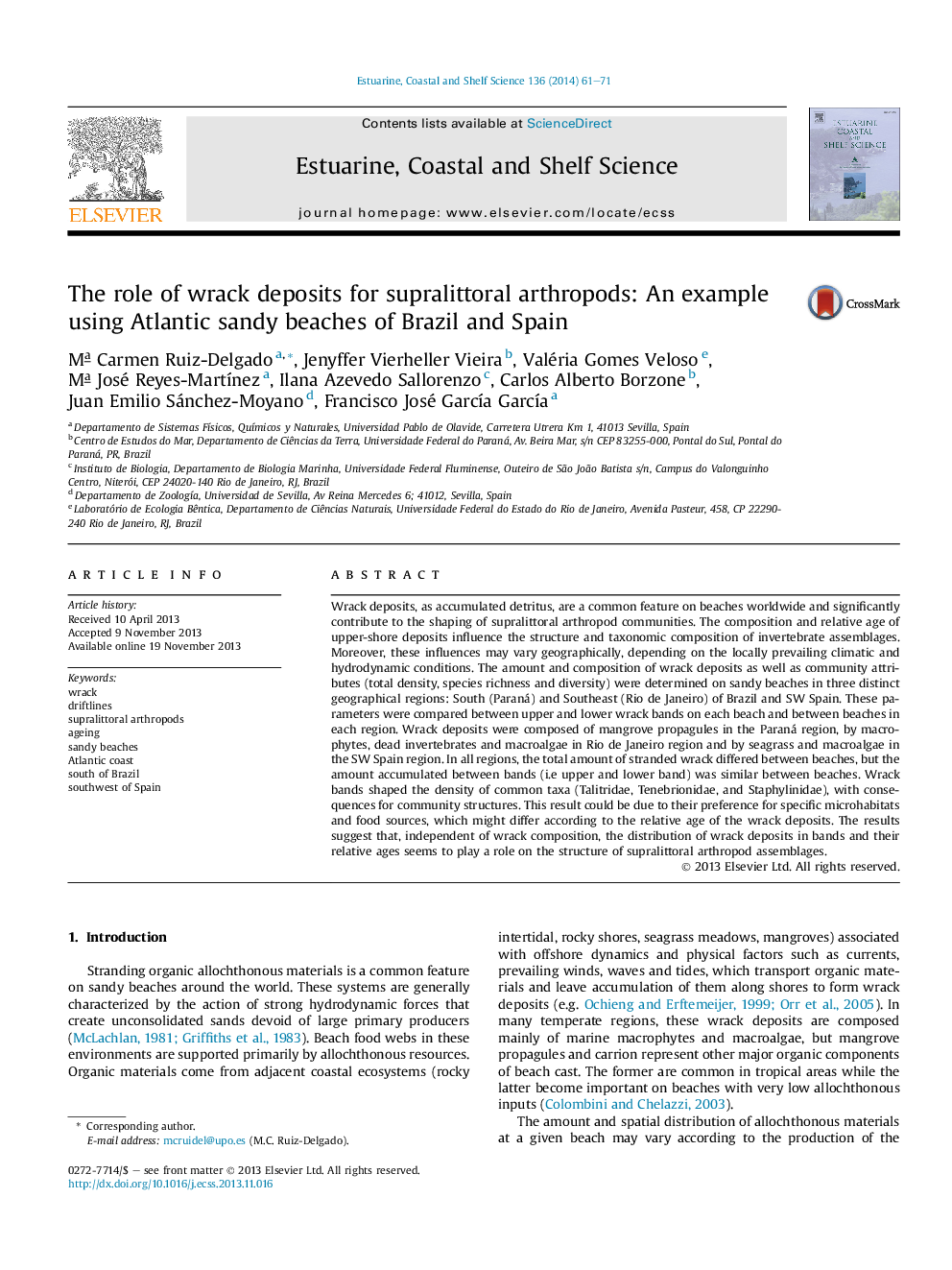| Article ID | Journal | Published Year | Pages | File Type |
|---|---|---|---|---|
| 6384997 | Estuarine, Coastal and Shelf Science | 2014 | 11 Pages |
â¢Supralittoral arthropods associated with different types of wrack were characterized.â¢Wrack deposited in bands influence the structure of upper-shore assemblages.â¢Talitridae, Staphylinidae and Tenebrionidae were distributed in relation to the bands.â¢Relative age of wrack deposits seem key on the structure of arthropods assemblages.
Wrack deposits, as accumulated detritus, are a common feature on beaches worldwide and significantly contribute to the shaping of supralittoral arthropod communities. The composition and relative age of upper-shore deposits influence the structure and taxonomic composition of invertebrate assemblages. Moreover, these influences may vary geographically, depending on the locally prevailing climatic and hydrodynamic conditions. The amount and composition of wrack deposits as well as community attributes (total density, species richness and diversity) were determined on sandy beaches in three distinct geographical regions: South (Paraná) and Southeast (Rio de Janeiro) of Brazil and SW Spain. These parameters were compared between upper and lower wrack bands on each beach and between beaches in each region. Wrack deposits were composed of mangrove propagules in the Paraná region, by macrophytes, dead invertebrates and macroalgae in Rio de Janeiro region and by seagrass and macroalgae in the SW Spain region. In all regions, the total amount of stranded wrack differed between beaches, but the amount accumulated between bands (i.e upper and lower band) was similar between beaches. Wrack bands shaped the density of common taxa (Talitridae, Tenebrionidae, and Staphylinidae), with consequences for community structures. This result could be due to their preference for specific microhabitats and food sources, which might differ according to the relative age of the wrack deposits. The results suggest that, independent of wrack composition, the distribution of wrack deposits in bands and their relative ages seems to play a role on the structure of supralittoral arthropod assemblages.
